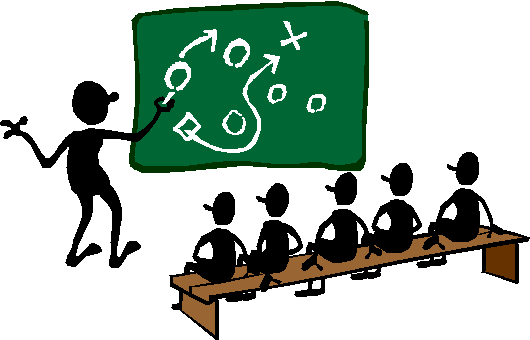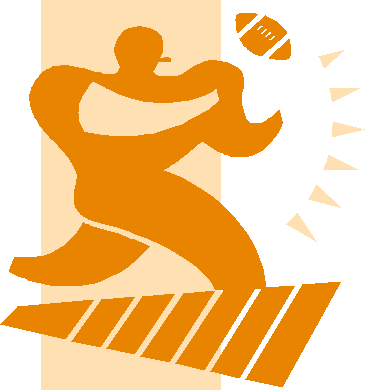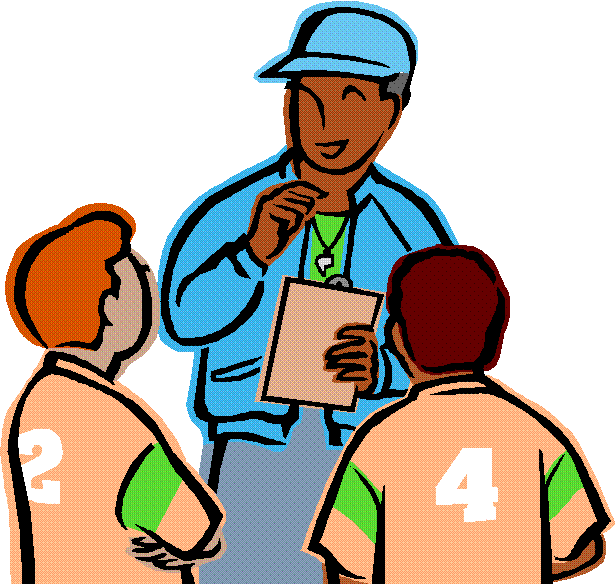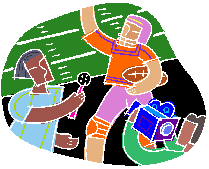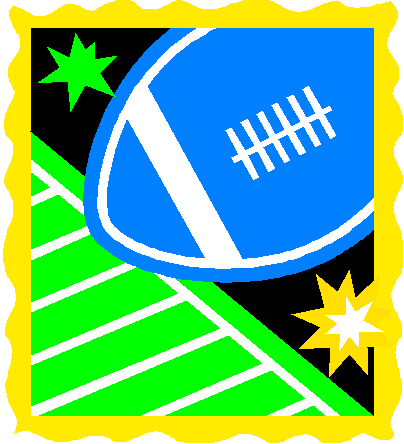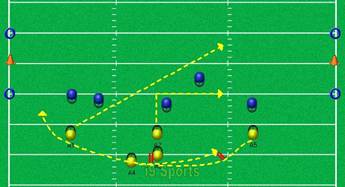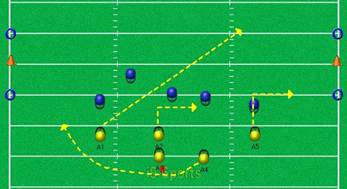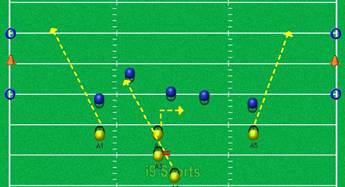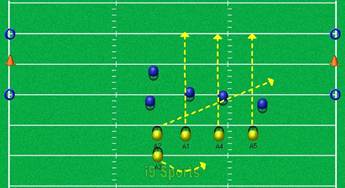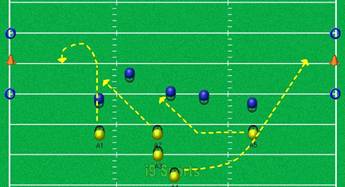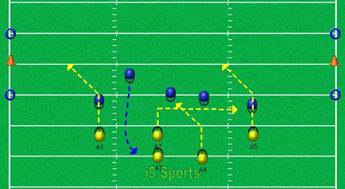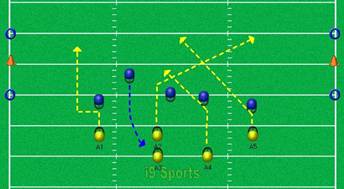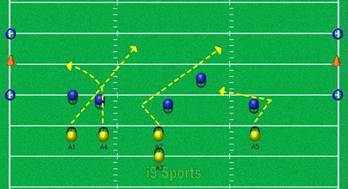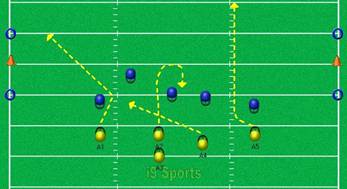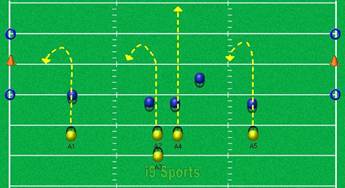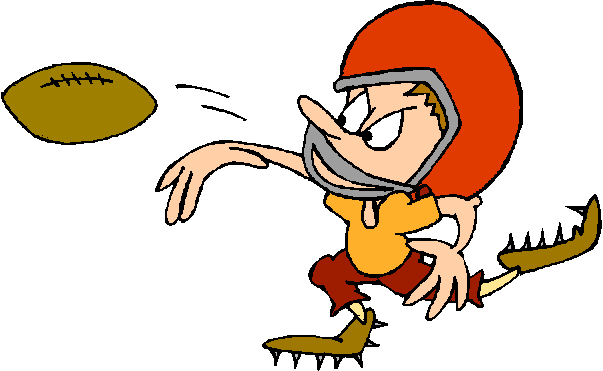Youth Flag Football Rulebook
Rulebook for youth flag football leagues.
By Shane Larkin | 04/03/2025
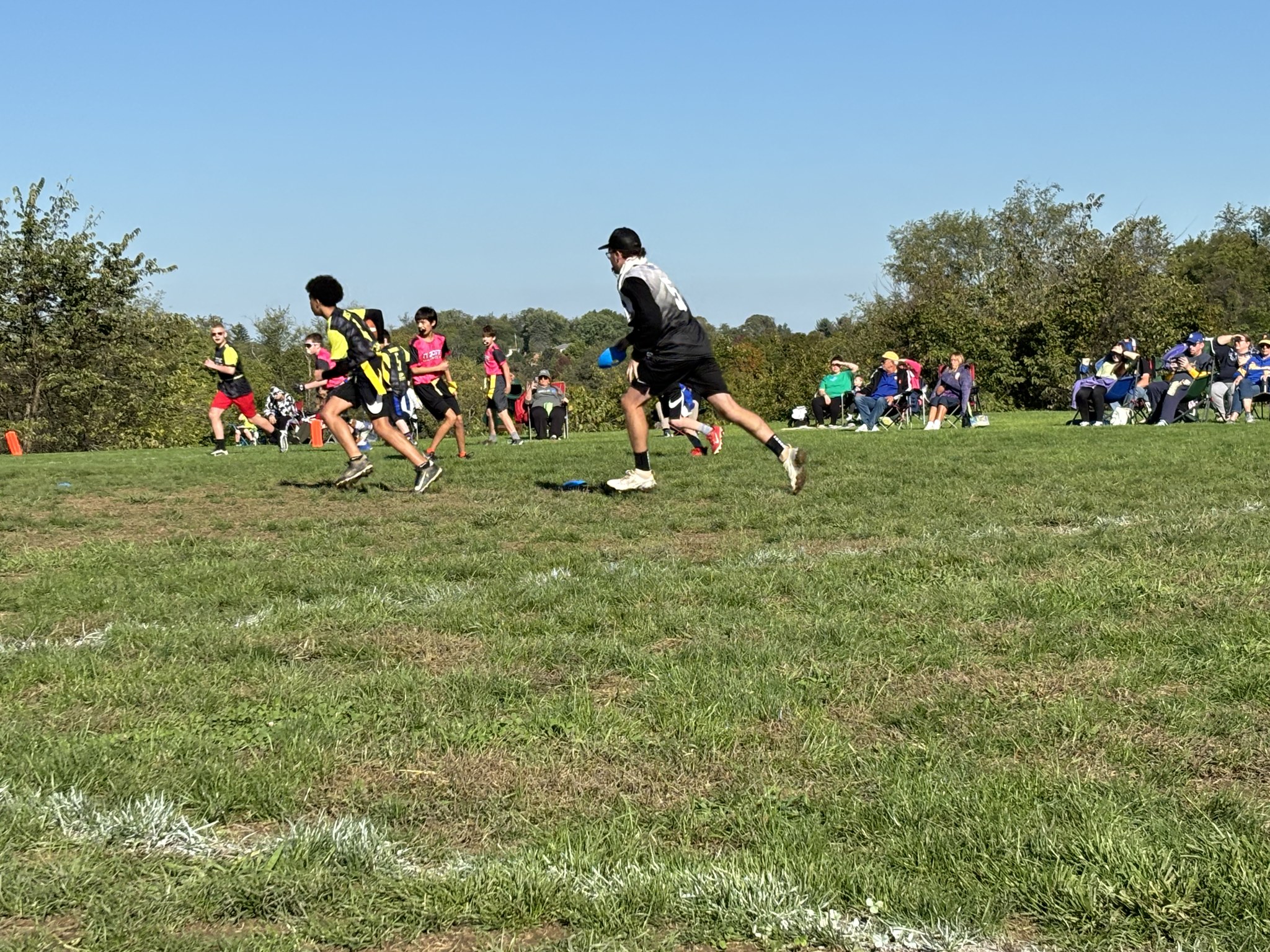
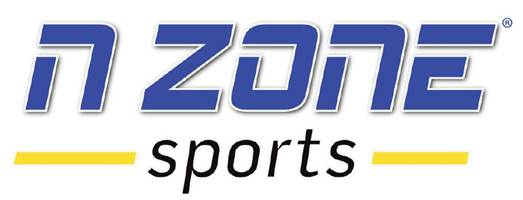
Coach’s Guide
FLAG FOOTBALL
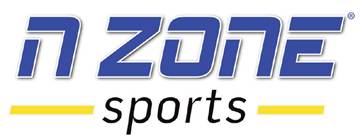
Table of Contents
Topic Page
Welcome to N Zone Sports 3
N Zone Sports Core Values 4
Coaching 101 5
Mighty Mite Program 11
Awards 14
N Zone Sports Rules 17
Game Day 22
- Practices 23
- Game Day 23
- Score Reporting 23
Practice Aid 29
Sample Flag Football Plays 32
Practice Notes 36
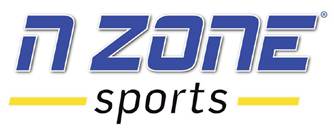
First and foremost, we would like to thank you for volunteering to become an
N Zone Sports coach. The continued success of this league depends on the involvement and dedication of parents and friends such as yourself. As you embark on your role as a coach, realize that you will play an enormous role in the development of the N Zone participant both on and off the field. We hope your experience will be very rewarding to you.
Being a coach can seem like a daunting task but fear not, being a great coach is simply a matter of applying hard work and following a few very important principles. Many coaches start out questioning their abilities or qualifications. If you fall under this category you’re not alone. As a matter of fact we commend you. Your willingness to question your own knowledge shows that you possess one of the key traits of a successful person; you care enough about others to honestly evaluate yourself. This sign of good character combined with the right resources of knowledge will enable you to provide your team with a great experience.
More important than an extensive knowledge of X’s and O’s, details and technique is having patience and understanding and a proper coaching mentality in regards to youth sports. Some of the best coaches ever are remembered by their players because of the care and attention shown to them.
This idea was kept in mind when we created N Zone Sport’s Core Principles. This booklet was designed to help you familiarize yourself with our culture, standards and philosophies. We’re confident that you’ll find the information contained herein helpful in creating the ideal environment for the enjoyment of all.
To assist you in making your contribution as an N Zone Sports Coach more enjoyable, we’ve created this manual for you as a resource. In the following pages you will find a host of valuable information about game day responsibilities, practice drills, a sample playbook and end of year season awards. .
Again, we thank you and wish you well on your journey as a coach with N Zone Sports. We congratulate you for stepping up and investing your time, effort and energy in youth sports. We hope you find your experience as rewarding as ours!
The N Zone Sports Staff
N Zone Sports Core Values
We take a S.A.F.E approach to youth sports
- Simplicity- We believe that youth sports has become a second and sometimes even a third job for many parents. With multiple games and practices throughout the week, more and more families are finding themselves captive to youth sports leagues. None’s philosophy is that registration should be simple and that scheduling shouldn’t conflict with life. Games are scheduled Saturdays only with practices usually an hour before the game. The more simple we can make things for families, the better the entire experience is likely to be.
- Achievement- Every child is a winner! Unlike many leagues, N Zone Sports endorses a policy that allows ample playing time for all members of a team. While we recognize the importance of the competitive spirit, no child should have to sit out simply because of their ability or talent level. Every parent pays the same amount so naturally it only makes sense that all kids receive plenty of playing time.
- Fun! We believe the primary reason kids play sports is to have fun.
Fundamentals, sportsmanship, leadership, teamwork and respect for others are all extremely important values we aim to instill in our participants but above all, the experience needs to be fun.
- Environment- We believe that the entire youth sports experience will be enhanced when the proper environment is achieved. This includes critical elements of safety and the positive influence of parents, teammates and fans. One of the most damaging things to a child is continued negativity. We aim to reinforce positive behavior and carefully correct those that need to be addressed.
Coaching 101
N Zone Coaching Methods
As a coach of an N Zone Sports program, we are far more interested in your ability to communicate with the children on your team to effectively impart a positive sports experience, than we are in your ability to teach the nuances of complex zone coverages or the double reverse.
Benefits of Athletic Participation for Kids
Research points out many benefits of getting kids to continue to participate in youth sports. Noting that, kids who stay in sports tend to stay in school, get better grades and have fewer behavioral problems.
It is extremely important that coaches remember that a successful youth coach is defined not in terms of a won-loss record, but in terms of how many kids decide to return to play again next season.
Equal Playing Time
The primary purpose of youth sports should be to teach fundamental sports skills in a non-threatening environment. That is, children should have the opportunity to learn new skills and improve previously learned skills and have fun doing it.
Coaches must create an environment both in practices and games where children are not afraid to make mistakes. Using fear of failure as a motivational technique is unacceptable. Mistakes happen as part of the learning process.
Children who hope to become better skilled so they can move on to more advanced levels of competition have to be willing to take risks and experiment with more advanced skill techniques and strategies. They will not do this if they are afraid of making mistakes. All members of any team come to the team expecting equal opportunities. They have the right to expect equal quality and quantity of coaching in practice. They all must be given the same opportunity to try out what they learn in practices in game situations. In fact,
games should be considered an extension of practices, another opportunity to learn. An athlete cannot learn much by sitting on the bench. Sports involve movement, physical skills. They are best learned by doing, not watching.
As a helpful reminder here's a checklist of some behaviors connected with positive coaching:
Kids deserve praise for participating/trying
The child chose to play a sport rather than hang out during free time. We need to credit each player just for being there. The youngster chose to sign up, come to practice and come to the games. We need to remind ourselves not to notice and praise kids only when they achieve. It's easy to praise the kids who do well in a sport. We also need to praise the youngsters who don't shine but who stay with a sport day in and day out.
Make a BIG deal out of even the SMALLEST positives
Promoting a positive self-image in kids while they play sports is essential! Look for positives and then encourage them with animated praise. At practices and games, a good goal is to try and keep a healthy ratio of positives to negatives. The more positives to negatives the better!
Additionally, you want to be specific in your praise. “Atta-boy”, while a good effort won’t go quite as far in building up kids as a more specific compliment such as, "I like the way you kept hustling after that play."
Finally, it's equally important to "make a big deal" out of it, to praise with animation. Kids respond to public accolades, so the more animated as a coach you are when praising, the better. In fact, a good motto is: "Praise in public and criticize in private."
Stay calm when mistakes crop up, help kids learn from their mistakes.
Dealing with a child after a mistake has been made is one of the most critical issues facing youth sports coaches. Ideally, youth sports offer kids great lessons in life: 1) it's OK to make a mistake, 2) mistakes WILL happen and 3) mistakes are stepping stones for learning.
When a youngster makes a mistake in a sport, one of two things can occur: 1) the youngster can learn from the mistake and try to improve the next time; or 2) the youngster can become preoccupied with the fear of making another mistake. The coach is the focal point that will help determine which path the youngster will travel.
If a coach stays calm and tries to instruct the child, there's a chance that the child will see the mistake as an opportunity to learn. If the coach stays calm there's a chance that the kid will stay calm, focus on the mistake and learn from it.
Unfortunately, as human beings, we often tend to have more animation in our reactions to negatives than in our reactions to positives. So it takes an extra effort on our part as coaches to remind ourselves to do all in our power to try to stay calm when mistakes occur.
Have reasonable, realistic, and reachable expectations
Trying to live up to expectations can be a major frustration for kids whether they are their own expectations, or those of adults in their lives. Despite the fact that they may not show it, kids have a strong desire for adult approval, the lack of which, can be a major source of low self-esteem. Since a coach often plays a major role in the life of a youngster, it is important to keep expectations reasonable and attainable. A good coach's skill expectations are based on the knowledge that all youngsters are different in their physical skills, skill development potential, and growth rate, all of which can affect their coordination.
A good coach's motivation expectations are based on the awareness that there are three levels of motivation for kids in youth sports: 1) some kids, especially the entry-level youngsters, are playing because their parents enrolled them, 2) many youngsters are playing because it's a social event allowing them to be with their friends, 3) a smaller group of youngsters, beginning at about age 11 or 12, are playing because they enjoy sports for sports' sake.
A good coach's dedication expectations are based on the knowledge that the level of dedication to practice and mastery of skills depends upon the level of motivation in a youngster. A good coach also knows that dedication wanes when playing the sport is no longer fun.
Treat kids with respect. Do not tolerate put-downs, sarcasm, or ridicule.
When a youngster signs up to play sports, he/she deserves to be treated with respect. This means no put-downs, no sarcasm and no ridiculing by the coach, or fellow players. Any youth sports coach who volunteers to take on the job of guiding kids in any given sport needs to be careful of how he/she comes across to the youngsters.
Remind kids not to get down on themselves.
A youngster making a mistake is going to happen, and kids can go from the top of the world, to down in the dumps in a matter of moments. The key is not to let the child get down on himself for an error, but rather make a positive out of the mistake whenever possible.
A youngster misses a lay-up on a fast break. The coach substituted for the youngster. He then said to him, "Son, I didn't take you out because of the missed lay-up. I took you out because after you missed the lay-up you hung your head, delayed in getting back on defense and allowed your opponent to score an easy basket. If you get down on yourself after you make a mistake all it does is give your opponent an advantage. Now, get back in there, learn from your mistakes and quit beating yourself up!"
Remember not to take yourself too seriously during the game.
Remember, this is a volunteer position; nobody is being paid to pace the sidelines here. You don’t need to make this your “life”, too many times in youth sports, the same person who seems to have it all together away from the field, is a different person as a coach. Kids will respond much more positively to a coach that does not look at mistakes on the field as a poor reflection of his coaching ability and his team’s preparedness. Rather, mistakes can be looked at by a coach as another opportunity to give encouraging feedback to a young athlete.
Maintain a Fun is #1 focus, with lots of laughter and sense of humor.
The #1 motivator for kids to play sports in the first place?...FUN! If you ask a child his motivation for playing a given sport, you are not likely to hear “to increase my self-confidence” or “to learn sportsmanship”, or “to better prepare me for life”. Kids enjoy competing, but the fun is the act of competing, the excitement of competing, not just the winning.
The effective coach is the coach who learns what fun is for the kids by getting into their shoes and seeing the world from their point of view, the world of fun. The effective coach knows that fun, laughter, and humor are second nature to kids.
Emphasize teamwork, and help kids think "WE" instead of "ME."
For these youngsters, self-esteem = a sense of belonging. Humans are a very social group and even our youngest members need to feel as though they belong to a group. Youth sports offer an automatic sense of belonging. Coaches are pivotal in making the "team" concept become a reality. The coach needs to ensure that ALL players are recognized, not just the best players. Parents should be encouraged to praise all the players on the team, not just their own.
Be a role model of good sportsmanship.
These days, sportsmanship has taken a distant back seat to the outcome of the contest. Coaches have a responsibility to promote sportsmanship and:
1) Win without gloating,
2) Lose without complaining
3) Treat opponents and officials with fairness, generosity and courtesy.
Youth Sports Coach Behavior Checklist
- Kids deserve praise for participating/trying!
- Make a BIG DEAL out of even the smallest positives!
- Stay calm when mistakes crop up; help kids learn from their mistakes.
- Have reasonable, realistic, and reachable expectations.
- Treat kids with respect. Do not tolerate put-downs, sarcasm, or ridicule.
- Remind kids not to get down on themselves.
- Remember no to take yourself too seriously during games.
- Maintain a fun is the #1 focus with lots of laughter and a sense of humor!
- Emphasize teamwork and help kids think “WE” instead of “ME!”
- Be a role model of good sportsmanship:
- Win without gloating
- Lose without Complaining
- Treat opponents and officials with fairness, generosity, and courtesy
Introducing
The N Zone Jr. Program
The N Zone Jr. program was created as a 3-4 year old age division, designed to be a fun, upbeat non-competitive program whereby scores and standings are not kept. Sessions consist of both instruction as well as simulated games being played. The format of the scrimmage games will depend on the number of teams in the division. League rules will not be enforced but it is the offensive team’s responsibility to keep the games moving while trying to evenly distribute playing time. Each team will play a minimum of two 10 minute periods. There will be a 5 minute break between periods to allow the kids to take a break and for coaches to teach important fundamentals and principals. Since kids at this age division do not typically have developed attention spans it is important to keep the pace and flow of things moving. Coaches that do keep things upbeat and exciting will quickly be faced with a group of disinterested children. The more excitement and encouragement you offer to them, the better experience everyone will have, including yourself. Essential to the success of the Jr. program is an involved group of assistant coaches and parent helpers to keep the kids on-task and focused. The key to coaching at this age division is to foster a positive, fun environment. Since there will not be weekday practices, it is of utmost importance to create an exciting environment whereby kids can’t wait to come back the following Saturday. Think outside the box and even include a relay race at the end of each Saturday session to end on a fun note. Scores are not kept nor recorded and there are no standings at this age division. The emphasis again is on the most basic of fundamentals, exercise and fun.
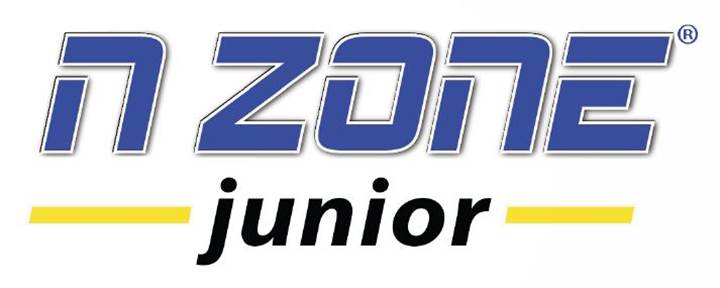
Coaching Responsibilities
- Participate in Coaches Meetings Support the N Zone Youth Sports Philosophy and Coaching Standards
- Introduce yourself to parents and serve as a point of contact for players/parents as needed. Provide them with a contact number as soon as teams are assigned.
- So that players and parents can identify you, wear your Coaches T-Shirt and name badge at all practices and games. On colder days, feel free to wear long sleeve shirt/sweatshirt under Coaches T-shirt.
- Check in at the N Zone Canopy before each game to pick up your
Sportsmanship Value and Values award
- Lead all practices and games for the entire season
- Help players understand the rules and fundamentals of the game
- Develop and teach basic plays
- Introduce and reinforce sportsmanship values
- In the event of an unanticipated absence or emergency, please provide advance notice to the league office and delegate to your Assistant Coach.
- Present Weekly Values award
- Ensure that players remove any trash before leaving the field
Traits of the Model Coach
- A coach should be enthusiastic without being intimidating. He or she should be sensitive to the children's feelings and genuinely enjoy spending time with them. He or she should be dedicated to serving children and understand that football provides physical and emotional growth for its participants. Remember, N Zone Sports is for the children.
- A coach needs to realize that he or she is a teacher, not a drill sergeant. He or she should help children learn and work to improve their skills. Personal gains are never a consideration. The job does not depend on winning. The best interest of the child transforms into the best interests of the game.
- The safety and welfare of the children never can be compromised. A coach will consider these factors above all others.
- A coach needs a tremendous amount of patience. Don't push children beyond limits in regards to practice. Children have many daily pressures and the football experience should not be one of them. Playing football is supposed to be fun.
- A coach should care more about the players as people than as athletes. The N Zone Sports program is a means to an end, not an end to itself.
- A coach should encourage his players to dream and set lofty goals. It is important to remain positive and refrain from discouraging remarks. Negative comments are remembered far more often than positive affirmations.
- A coach needs to remember that the rules of the game are designed to protect the participants, as well as to set a standard for competition. He or she never should circumvent or take advantage of the rules by teaching deliberate misconduct. A coach who puts his or her opponents' team at risk should not be involved with children.
- A coach should be the first person to demonstrate good sportsmanship. He or she should take a low profile during the game and allow the kids to be the center of attention.
- Parents and players place a lot of trust and confidence in the coach. The coach has an important role in molding the athletic experience of the child.
- A coach can measure success by the respect he gets from his or her players, regardless of victories or defeats. Children who mature socially and physically while participating in sports are the best indication of good coaching.
Awards
N Zone Weekly Sportsmanship Values
As an N Zone Sports Coach, you play a critical role in reminding our youth (and their parents) of the importance of maintaining the fundamental values of good sportsmanship. These values are essential not just to sports, but to the social fabric of our entire society.
Because we’re living in an age in which traditional values are often forgotten, we cannot assume that all children are being taught these values at home. As you know, we believe that teaching kids how to play the game is only half of our job… helping them develop character is the other half.
We have provided you with two tools to help you reinforce the importance of good sportsmanship:
- For Parents: The N Zone Sports Parent’s Promise
The purpose of reviewing the N Zone Sports Parent’s Promise with parents is to heighten parents’ awareness of their role in modeling good sportsmanship, to educate them on what type of behavior is expected of them, and to give you the license to address situations in which a parent may be allowing their competitive spirit to interfere with N Zone’s focus on fun.
- For Youth: Sportsmanship Awards
To help you teach youth players what good sportsmanship is all about, we have created special awards for kids that demonstrate select values. By focusing on one key value each game, you have the ability to use moments from the game as teaching points for a specific value ("I know it seemed like you scored a touchdown, but I was really proud of the way you didn’t argue with the referee.")
We ask you to look for these moments and to recognize the children by awarding them with a values award that we will provide to you. Each player should earn one award in the course of the season for clear acts of demonstrating teamwork, leadership, sportsmanship and effort.
Suggestions for using the weekly values:
- In the practices or games, watch for instances when players exhibit the right kinds of behavior. Recognize frequently and openly. Make a big deal of giving positive feedback!
- Make the discussion interactive by asking questions and giving examples.
- When you observe negative behavior, it is important that you address it directly with the player in a manner that will not embarrass him/her in front
of others. Your goal should be to constructively correct; never to
humiliate. The best way to handle a negative situation is to call the player
to the sidelines and deal with the issue privately one-to-one.
- Don’t forget that you are the kids’ best role model for good sportsmanship. Be very mindful of how you respond to game officials and/or to disagreements with other coaches. Your players will take their lead from you… they’re always watching!
- Remember that “Having Fun is #1!”
Additional Awards
Trophies are awarded to the first and second place teams in each division. All
N Zone Jr. players will receive a trophy.
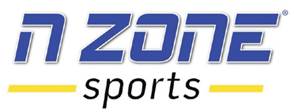
Flag Football Rules
1) Team info/ Player rules
• Teams must field a minimum of five (5) players at all times. Games will be played and are official if a team can field at least four (4) players. Games will be called ten minutes after the scheduled start time if a team does not have at least 4 players and a 6-0 score will be recorded.
• Teams consist of approximately 7-9 players player rosters will be checked throughout the season.
• Only one coach is permitted on the field or in the huddle. Once a play begins, the coach must step back and not interfere. This includes pushing players at the beginning of a play.
2) Procedures:
• A coin toss determines first possession; The visiting team will call the toss. The winner of the toss will either accept the ball and begin on offense or elect to go on defense. Whichever team plays defense to begin the game will have the ball on offense to begin the 2nd half.
• Ball Size: Age groups with max age 9 and under will use a pee wee ball. Age groups including ages 10 and above will use a junior size ball. All older divisions will use a junior size ball.
• An offensive team takes possession of the ball at its 5-yard line and has three (4) plays to cross midfield. After the third play, if they have not crossed the first down line, they can choose to punt or play. If they choose to play, a failed first down conversion will result in a turnover on downs at the spot. Once a team crosses midfield, it has a set of three (4) new downs to score a touchdown. If the offense fails to score, the ball changes possession and the new offensive team takes over on its own 5-yard line.
• Each time the ball is spotted, a team has 30 seconds to snap the ball. Teams will receive one warning before a delay-of-game penalty is enforced.
• Each team receives two (2) timeouts per half.
• Play consists of two 20 minute halves. The clock will stop in the 2nd half on a change of possession. In the last 2 minutes of the 2nd half only timeouts, changes of possession, injuries or official timeouts can stop the clock.
• Fields will be clearly marked with painted lines, cones & discs. Field length= 60x25 yds.
Note: There are no kickoffs, no punts and no blocking is allowed.
3) Scoring
Touchdown: 6 points
Extra point: 1 point (played from 5-yard line no-run zone) or 2 points (played from 12-yard line)
Note: Interceptions on an extra points CAN be returned.
Safety: 2 points (plus defense gets possession of the ball on their own 5 yd line)
4) Timing/Overtime
• Games are played to 40 minutes running time.
• If the score is tied at the end of 40 minutes, teams move directly into overtime with a coin toss for possession. Overtime format is Texas shootout with the ball placed at the 12 yard line. Each team will have 3 downs to score. If successful, a team may opt for a 1 or 2 pt conversion. If the game is still tied after 1 overtime period the 2nd team to have possession in OT 1 will receive the ball first and each team will have 1 play to produce the most net yards from scrimmage from the 12 yard line (heading towards the goal). If the ball carrier's flag is pulled in the backfield the loss of yardage will be noted. If both teams score on their possession in OT2, procede to OT3, etc. No extra points are to be attempted in OT2 and beyond.
• Each time the ball is spotted, a team has 30 seconds to snap the ball. Teams will receive one warning before a delay-of-game penalty is enforced.
• Each team has one (1) time out in overtime.
• In the last 2 minutes of the 2nd half, the clock stops only on change of possession or time out.
• Officials can stop the clock if needed.
• Inside the last 2 minutes of the 2nd half, if a TD is scored the clock will stop. An untimed PAT will be attempted. The clock will resume upon the snap of the next offensive play.
• If a touchdown is scored as time expires, a one or two point try will ensue. However, if the score takes place at the conclusion of a game (2nd half), the try will only be attempted if the result of the try has an implication on the outcome of the game. No exceptions.
5) Passing
• Lateral and/or backward passes and pitches are allowed behind the line of scrimmage only. Only one forward pass per down. Max of 2 backwards laterals allowed per play.
• When receiving a pass, the center must be at least one yard beyond the line of scrimmage. Centers are not eligible to receive a direct handoff.
• The quarterback has a seven-second “pass clock.” If a pass is not thrown within the seven seconds, the play is ruled dead. Once the ball is handed off, the seven-second rule no longer is in effect.
• Interceptions change the possession of the ball and are the only changes of possession that do not start on the 5-yard line. Interceptions are allowed, and can be run back. Completion of an interception is NOT a dead ball.
6) Running
• Quarterback sneaks or runs are not permitted.
• The quarterback is defined as the person that receives the snap
• Direct hand offs, laterals, pitches and screen passes ARE allowed behind the line of scrimmage.
• If the ball hits the ground on a snap, it is placed where it hit the ground.
• “No-run zones” are located 5 yards from each end zone.
• A player who takes a handoff, pitch or backward pass may elect to pass if he/she has not yet crossed the line of scrimmage.
• Once a ball has been handed-off, pitched, or passed, all defensive players can immediately cross the line of scrimmage.
• Only players lined up 7 yards from the line of scrimmage are eligible to immediately cross the line of scrimmage. There is no limit on how many rushers the defense can start at the 7 yard rush cone and send each play.
• Spinning is allowed, but players cannot dive to advance the ball or avoid a defensive player. Diving is not allowed by any offensive player except when attempting to catch a pass.
• The ball must be snapped between the legs of the center and clearly change possession to the QB. The ball cannot be handed directly back to the center in sideways fashion (some exceptions apply)
• The ball is spotted where the player’s flag is pulled. The forward most point of progress is marked by the player’s hips/flag belt.
7) Receiving
• All players are eligible to receive passes.
• A player must have at least one foot inbounds with complete control of the ball when making a reception.
• Receivers can leave their feet to catch a pass.
• A receiver’s route cannot be cut off or blocked by a defensive player. However, a rusher maintaining a direct line to the quarterback has the right of way.
• The center (snapper) is eligible for a pass when going a minimum of 3 ft past the line of scrimmage.
Once the ball crosses the line of scrimmage, there can be no offensive exchanges of possession. Ex: No hook and laterals or down field handoffs.
8) Dead Balls
• The ball must be snapped between the legs (direct or shotgun), not off to one side, to start play. (Exception when age group 5-7 is present. Snapping to the side is permitted)
• Substitutions can be made at the beginning of a new possession or after any dead ball.
• Play is ruled “dead” when:
— Ball carrier’s flag is pulled.
— Ball carrier steps out of bounds.
— Touchdown or safety is scored.
— Ball carrier’s knee hits the ground.
— Ball carrier’s is touched with one hand after flag falls off.
— The referee blows the whistle
Note: There are no fumbles. If a ball is fumbled it is the offense’s ball at the spot of the ball hits the ground. If fumbled forward the ball is spotted where the ball came loose.
9) Rushing the Quarterback
•All players who rush the passer must be a minimum of seven yards from the line of scrimmage when the ball is snapped. Officials will mark the 7 yard rush point.
•Any number of players can rush the quarterback.
•Players not rushing the quarterback may defend as far forward as one yard off the line of scrimmage.
•Once the ball is handed off, the seven-yard rule no longer is in effect, and all defenders may cross the line of scrimmage.
•A special marker, or the referee, will designate seven yards from the line of scrimmage.
Note: Remember, no blocking or tackling is allowed.
10) Sportsmanship
• N Zone Sports Flag Football requires coaches to provide all participants an opportunity to develop their skills, regardless of ability. Coaches are required to actively include every member of his/her team that is eligible to play. This requirement applies to every player listed on a team roster, playoff games. The exception to this is if a player is sick, injured, or does not want to play.
•If an official witnesses any acts of tackling, taunting, cheap shots, elbowing, blocking or any unsportsmanlike act, the game will be stopped and the player will be ejected from the game. The referee may use to discretion to provide a warning for a first offense of tackling.
FOUL PLAY AND UNSPORTSMANLIKE CONDUCT FROM PLAYERS AND COACHES WILL NOT BE TOLERATED.ONE WARNING WILL BE ISSUED. IF CONDUCT CONTINUES THE PLAYER/COACH WILL BE EJECTED FROM THE GAME AND FACE POSSIBLE DISCIPLINE FROM THE LEAGUE UP TO AND INCLUDING REMOVAL FROM THE LEAGUE.
•N Zone Youth Sports exists to provide a positive environment for the enjoyment of all present. All players, coaches, parents and fans are expected to show good sportsmanship at all times, and respect others on and off the field. The league, at its sole discretion, reserves the right to eject, suspend or dismiss anyone from the property for inappropriate behavior detrimental to the league.
•If the official determines that a defensive player tackles an opponent to the ground in an attempt to pull the flag, the defensive player will be warned and a 10 yard penalty will ensue. A second similar infraction will result in an ejection from the game (for the duration of the game), and there will be a 10 yard penalty assessed from the point of infraction.
•Trash talking is not allowed. Officials have the right to determine offensive language. If trash talking occurs, the referee will give one warning. If it continues, the player or players will be ejected from the game.
11) Attire
•Non-metal cleats are allowed. Inspections will be made.
•All players must wear a protective mouthpiece; no exceptions.
•Official N Zone Flag jerseys must be worn and tucked in, during play. No jeans, no pockets, no jewelry and no hats with lids will be allowed on the field during play.
•Players can not wear yellow shorts.
12) Penalties
Defense: Most defensive penalties will result in 5 yards and automatic first down
Off-sides: Player lined up across the line of scrimmage when ball is snapped
Pass Interference: contact with the receiver before the ball arrives (Spot Foul). If a defensive PI penalty occurs in the end zone, the ball is spotted at the 1 yard line, 1st down.
Illegal contact: holding, blocking, bump & run guarding. Penalties will also be enforced when a rusher makes contact with the quarterback’s arm in effort to block a pass.
Illegal flag pull: pulling a player down by or grabbing a hold of a ball carriers clothing. (Spot foul. 5 yds or half the distance to the goal, whichever is more, from spot of foul and automatic first down)
Illegal rushing: starting rush inside 7-yard marker before snap and breaching line of scrimmage. If the rusher does not cross the line of scrimmage there is no penalty.
Offense: Dead Ball Offensive penalties will result in a 5 yard penalty enforced from the line of scrimmage, with NO LOSS OF DOWN. The only spot fouls are defensive pass interference (See above) and flag guarding where a 5 yard penalty AND Loss of down will be assessed from the spot of the infraction.
Illegal motion: false start or. Also covers no more than 1 player in motion when the ball is snapped. (Multiple offensive players may shift as long as they are set at the time of the snap. Motion is defined as a player moving at the time of the snap)
Illegal forward pass: Only one forward pass is allowed per play. Penalty is a dead ball and loss of down.
Flag guarding: using hands to swat at or to attempt to prevent a defensive hands from pulling a flag.
Delay of game: There is a 30 second play clock. One warning is issued before a 5 yard penalty. The following offensive penalties result in a 5 yard penalty and a loss of down:
Offensive pass interference: illegal pick, pushing off defender
Illegal Blocking: moving screens and picks are not allowed
Impeding the rusher:
- Any movement towards the rusher that impedes his direct path to the ball carrier.
- A change of direction by the rusher that results in contact is considered incidental contact
- Incidental contact may be called at the official’s discretion. Penalty will be assessed from the line of scrimmage. THE RUSHER HAS THE RIGHT OF WAY.
• Halves and/or games cannot end on a defensive penalty, unless declined by the offense.
• Teams may elect to decline penalties called against the opposing team.
• All penalties will be called by the referee. PLEASE RESPECT THEIR DECISION. Only the team captain or head coach may ask the referee for an explanation or rule clarification during a game. Players and parents cannot question an official’s call.
14) Playoff Criteria
Division Playoffs (for each age group)
Final playoff standings will be determined by record. In the event of a tie, it is broken in this order:
1) Winning %
2) Head-to-Head
3) Fewest points scored against
4) Coin Toss
NOTE: The league reserves the right to modify rules during the season. N Zone Sports reserves the right to ask player’s parents/guardians to produce valid proof of age in the form of a birth certificate or other forms of legal identification.
Game Day
Practice
At N Zone Sports, we recognize that time is a premium for families and strive to be as convenient as possible. This is why we leave practices optional. At the discretion of the coach, practices can be held, but they are not to be made mandatory. If a child misses a practice for any reason, they are not to be excluded from playing in a game.
Our suggestion to our coaches is to hold practice 30-60 minutes before the regularly-scheduled game time. This way coaches, players and parents are able to get everything accomplished in 1 trip to the venue.
Regular Season Game Day Procedures
- When special values are observed, award the player with an N Zone Sports Values award. Be sure to make a big deal about it and announce the player’s positive action to the players and parents. Celebrate these moments.
- Required Apparel
- N Zone Sports Certified Coach Yellow or Blue T-Shirt
- Equipment Check
- Coaches mesh bag
- 1 Game Ball
- Flag Belts
- When applicable, review Weekly Values with your team
- We advise that you coach from the field and have an assistant coach be responsible for the substitutions
- At the conclusion of the game
- Form a line with your team to shake hands with the other team
- Confirm the score with the referee
- Relay any necessary information to the parents
- If it is your week to award Sportsman of the Week, select a player, recognize the player in front of his peers and then to the team parents. Be sure to report the name of this child to the canopy before leaving.
- Prior to leaving the premise, winning coach reports score to canopy
Reporting Scores
- Scores are to be reported by the winning coach, who will post the score on the game log located at the N Zone Canopy, prior to leaving the premises. The correct score, date of game, field # and location, as well as the opponent you played is EXTREMELY important. Again, it is the winning coach’s responsibility to report the score. Game scores will be posted on the web site. Any disputes regarding a score must be submitted via email or telephone, explaining the situation by Tuesday of the following week.
- When posting scores please be accurate….Putting incorrect data will only cause discrepancies with the standings and delay the posting.
- After the scores are submitted, the standings will be updated on the web site within 24 hours. Anyone may view standings under the Standings tab at www.N Zonesports.com.
- Please double check for accuracy and make sure that your opponent and score were both reported correctly. If you feel that the score was reported incorrectly, please email or call the league office as soon as possible.
Scoring
- Touchdown: 6 points
- Extra point: 1 point (played from 5-yard line) or 2
points (played from 12-yard line)
- Extra Point Attempt Return 2 points
- Safety: 2 points
- Forfeits: Any forfeit will be scored as 7-0 for the
non-forfeiting team
Please remember that scoring is part of the game but not the only thing; always place the kids before the win!
1) Team info/ Player rules
• Teams must field a minimum of five (5) players at all times. Games will be played and are
official if a team can field at least four (4) players. Games will be called ten minutes after the
scheduled start time if a team does not have at least 4 players and a 7-0 score will be recorded.
• Teams consist of approximately 7-9 players
Player rosters will be checked throughout the season.
• Only one coach is permitted on the field or in the huddle. Once a play begins, the coach must
step back and not interfere. This includes pushing players at the beginning of a play.
2) Procedures:
• A coin toss determines first possession; The visiting team will call the toss. If a team defers,
they automatically receive the ball to begin the 2nd half. If they elect to start on offense, they will
begin the 2nd half on defense.
• Ball Size: Ages 9 and under use a Pee Wee ball while ages 10 and above use a junior ball.
• The offensive team takes possession of the ball at its 5-yard line and has three (3) plays
to cross midfield. Once a team crosses midfield, it has a set of three (3) new downs to score a
touchdown. If the offense fails to score, the ball changes possession and the new
offensive team takes over on its own 5-yard line. (Any time a team turns a ball over on downs,
regardless of where they are on the field, the opposing team begins their drive at their own 5.
• Each time the ball is spotted, a team has 30 seconds to snap the ball. Teams will receive one
warning before a delay-of-game penalty is enforced.
• Each team receives two (2) timeouts per half.
• Fields will be clearly marked with painted lines, cones & discs. Field length= 50x30 yds.
Note: There are no kickoffs, no punts and no blocking is allowed.
3) Scoring
Touchdown: 6 points
Extra point: 1 point (played from 5-yard line no-run zone) or 2 points (played from 12-yard line)
Note: Interceptions on an extra points can not be returned.
Safety: 2 points (plus defense gets possession of the ball on their own 5 yd line)
4) Timing/Overtime
• Games are played to 40 minutes running time.
• If the score is tied at the end of 40 minutes, teams move directly into overtime with a coin toss
for possession. Overtime format is Texas shootout with the ball placed at the 12 yard line.
• Each time the ball is spotted, a team has 30 seconds to snap the ball. Teams will receive one
warning before a delay-of-game penalty is enforced.
• Each team has two (1) time out in overtime.
• In the last 2 minutes of the 2nd half, the clock stops only on change of possession or time out.
• Officials can stop the clock at their discretion.
• If a touch down is scored as time expires, a one or two point try will ensue. However, if the
score takes place at the conclusion of a game (2nd half), the try will only be attempted if the
result of the try has an implication on the outcome of the game. No exceptions.
5) Passing
• Lateral and/or backward passes and pitches are allowed. Only one forward pass per down.
• When receiving a pass, the center must be at least one yard beyond the line of scrimmage.
• The quarterback has a seven-second “pass clock.” If a pass is not thrown within the seven
seconds, the play is ruled dead. Once the ball is handed off, the seven-second rule no
longer is in effect.
• Interceptions change the possession of the ball and are the only changes of possession that do
not start on the 5-yard line. Interceptions are allowed, and can be run back. Completion of an
interception is NOT a dead ball, except on an extra point attempt.
6) Running
• There are no QB sneaks allowed at any age division.
• Direct hand offs, laterals, pitches and screen passes ARE allowed behind the line of scrimmage.
• If the ball hits the ground on a snap, it is placed where it hit the ground.
• “No-run zones” are located 5 yards from each end zone.
• A player who takes a handoff, pitch or screen pass may elect to pass if he/she has not yet
crossed the line of scrimmage.
• If a the ball has been handed-off, pitched, or screen pass, all defensive players can immediately
cross the line of scrimmage.
• Spinning is allowed, but players cannot jump or leave their feet to avoid a defensive player.
Diving is not allowed by an offensive player.
• A ball carrier can not leave his feet when running with the ball.
• The ball must be snapped between the legs of the center and clearly change possession to the
QB. The ball can not be handed directly back to the center in sideways fashion.
• The ball is spotted where the ball carrier’s hips/flag belt was when pulled, not by the spot of the ball.
7) Receiving
• All players are eligible to receive passes.
• A player must have at least one foot inbounds with complete control of the ball when making a
reception.
• Receivers can leave their feet to catch a pass.
• A receivers route can not be cut off or blocked by a defensive player.
Once the ball crosses the line of scrimmage, there can be no offensive exchanges of possession. Ex: No hook and laterals or down field handoffs.
8) Dead Balls
• The ball must be snapped between the legs (direct or shotgun), not off to one side, to start play.
(For exception to this rule at the 4-6 age group, See Junior Division below)
• Substitutions can be made at the beginning of a new possession or after any dead ball.
• Play is ruled “dead” when:
— Ball carrier’s flag is pulled.
— Ball carrier steps out of bounds.
— Touchdown or safety is scored.
— Ball carrier’s knee hits the ground.
— Ball carrier’s is touched with one hand after flag falls off.
— The referee blows the whistle
Note: There are no fumbles. If a ball is fumbled it is the offense’s ball at the spot of the loss
9) Rushing the Quarterback
•All players who rush the passer must be a minimum of seven yards from the line of scrimmage
when the ball is snapped. Officials will mark the 7 yard rush point.
•Any number of players can rush the quarterback.
•Players not rushing the quarterback may defend as far forward as the line of scrimmage.
•Once the ball is handed off, the seven-yard rule no longer is in effect, and all defenders may
cross the line of scrimmage.
•A special marker, or the referee, will designate seven yards from the line of scrimmage.
Note: Remember, no blocking or tackling is allowed.
10) Sportsmanship
• N Zone Sports Flag Football requires coaches to provide all participants an opportunity to develop their skills, regardless of ability. Coaches are required to actively include every member of his/her team that is eligible to play. This requirement applies to every player listed on a team roster, playoff games. The exception to this is if a player is sick, injured, or does not want to play.
•If an official witnesses any acts of tackling, taunting, cheap shots, elbowing, blocking or any unsportsmanlike act, the game will be stopped and the player will be ejected from the game.
FOUL PLAY AND UNSPORTSMANLIKE CONDUCT WILL NOT BE TOLERATED.
•N Zone Youth Sports exists to provide a positive environment for the enjoyment of all
present. All players, coaches, parents and fans are expected to show good sportsmanship at all times, and respect others on and off the field. The league, at its sole discretion, reserves the right to eject, suspend or dismiss anyone from the property for inappropriate behavior detrimental to the league.
•If the official determines that a defensive player tackles an opponent to the ground in an attempt
to pull the flag, the defensive player will be penalized and warned. A second infraction will result
a penalty and ejection from the game,
•Trash talking will not be tolerated. Officials have the right to determine offensive language. If
trash talking occurs, the referee will give one warning. If it continues, the player or players will be
ejected from the game.
11) Attire
•Non-metal cleats are allowed. Inspections will be made.
•All players must wear a protective mouthpiece; no exceptions.
•Official N Zone Flag jerseys must be worn and tucked in, during play. No jeans, no pockets, no
jewelry and no hats will be allowed on the field during play.
•Players can not wear yellow shorts or sweat pants.
12) Penalties
Defense: All defensive penalties will result in 5 yards and automatic first down
Off-sides: Player lined up across the line of scrimmage when ball is snapped
Pass Interference: contact with the receiver before the ball arrives
Illegal contact: holding, blocking, bump & run guarding
Illegal flag pull: pulling a player down to the ground by his/her clothes
Illegal rushing: starting rush inside 7-yard marker
Offense: Dead Ball Offensive penalties will result in a 5 yard penalty enforced from the line of scrimmage, with NO LOSS OF DOWN. THERE ARE NO SPOT FOULS.
Illegal motion: more than one person moving, false start, etc.
Illegal forward pass: pass received behind line of scrimmage
Flag guarding: using hands to “swat” defensive hands from pulling flag
Delay of game: There is a 30 second play clock
The following offensive penalties result in a 5 yard penalty and a loss of down:
Offensive pass interference: illegal pick, pushing off defender
Illegal Blocking: moving screens and picks are not allowed
Impeding the rusher: Any movement towards the rusher to impede his direct path
• Referees determine incidental contact that may result from normal run of play. All
penalties will be assessed from the line of scrimmage.
• Halves and/or games cannot end on a defensive penalty, unless declined by the offense.
• Teams may elect to decline penalties called against the opposing team.
• All penalties will be called by the referee. PLEASE RESPECT THEIR DECISION. Only the team
captain or head coach may ask the referee for an explanation or rule clarification during a game
Players and parents can not question judgment calls.
13) Junior Division (players ages 4-6): The following are modifications for this division ONLY.
•QB sneaks are allowed
•All defensive players must line up at the 7 yard rushing line that the official will designate for
each play. However, when the offense has the ball inside the 5 yd line, defensive players can
line up on the line.
•The No-Run Zones are eliminated
•The center to QB exchange can hit the ground. This will not be counted as a dead ball.
•The center to QB snap may be off to the side, as well as between the legs.
•Games can be played with a minimum of 4 players
14) Playoff Criteria
Division Playoffs (for each age group)
Final playoff standings will be determined by record. In the event of a tie, it is broken in this order:
1) Winning % (if still a tie, go to #2)
2) Head-to-Head, exclude this item if a 3-way tie (if still a tie, go to #3)
3) Fewest points scored against
4) Coin Toss
NOTE: The league reserves the right to modify rules during the season. N Zone Sports reserves the right to ask player’s parents/guardians to produce valid proof of age in the form of a birth certificate or other forms of legal identification.
Playing Field
The typical playing field is 50 yards in length and 30 yards wide with 8 yard end zones at each end. These dimensions can be modified to suite the area or other concerns.
No-Running Zones: Will be marked 5 yards from each end 8 zones. The no-run zone is only in play when the ball is between the goal line and 5 yard line.
THE FIELD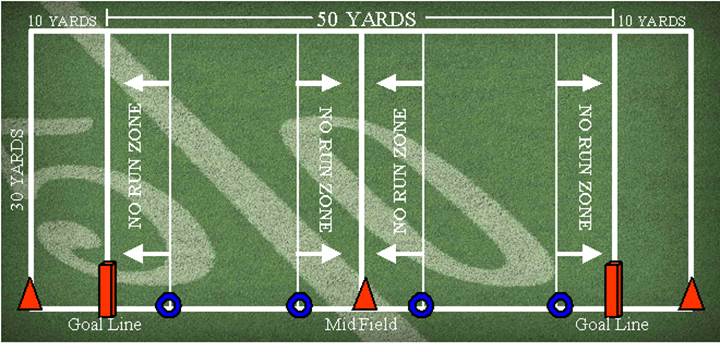
“and the most important rule of all... HAVE FUN!!!”
Practice Aid
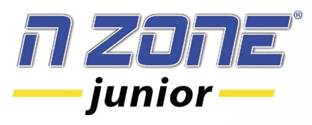
N Zone Sports Coaching Suggestions
As we previously stated, you don’t need to have a large wealth of sport-specific knowledge in order to be an effective N Zone Sports coach. What you do need is good communication skills to create a positive experience for all involved.
Children learn in many ways, but one thing is always common, have fun! Ask any child why they play a chosen sport and the answer most likely is to have fun. To accomplish this, a child must have a reasonable level of success. Now this will be different for each child, so don’t think that you must win the championship to show your team success! It is all how you place value on the different aspects of the game that will shape your team’s perception of themselves.
This brings us back to the point of make the biggest deal of the smallest positive! Focus on what your team is doing well. When they complete a pass…go crazy! When they exemplify a sportsmanship value…load on the praise! With this mentality they are sure to get better and better regardless of their experience or current level.
Besides loading on the praise, giving the players the tools needed for success will also positively affect their experience. When teaching the skills of the game, there are 3 phases of coaching that will assist in your communication to the players.
3 Phases of Coaching
- Skill Introduction
- Always start by obtaining the attention from every one of your players. Insist on eye contact and silence when the coach is talking to the group.
- Always name the skill that is being introduced. This is part of the education process and will aid them in future sport play.
- Always explain how the skill relates to the main goal of the sport (i.e. scoring). This gives value to the skill.
- Remember to keep things short and sharp! The attention span of the youth sports athlete is very short.
- Demonstration
- Most children learn through seeing a visual demonstration. They will try to replicate what has been performed.
Always demonstrate the skill several times and start at a slower speed so that the players can see the nuances involved.
- If possible have a player who has previously shown success at this skill to perform it in front of the group. This will give confidence to the demonstrating player as well as show the others that they can also have success at this skill.
- Always talk your way through the skill to your players. This will help them focus on the details.
- Coaching
- As the players are practicing the new skill, make your rounds and provide feedback as needed
- This can be done in smaller groups or with individual attention. Remember that some players will pick up the skill quickly, while others will need more attention.
- When you are working with the players make sure to let them know what they are doing well as well as what they need to develop. Everyone likes to hear positives!
Progression of Practice
The key to a great practice is follow steps that will lead to success. This is much easier than it sounds! Here are some hints to get you on your way:
- Spend 5-10 minutes before your practice to think out a quick outline of your practice time.
- Keep your progression from simple to complex. Take the skill from a static stage and slowly add in pressures (space, time or opponents).
- Try to cover only 1 main skill per practice. This will allow players to focus on one aspect of the game at a time. Think of it this way…you wouldn’t teach reading and math in the same hour of class time and expect the students to be great in each.
- Always end in a game (or as close to one as you can) and show the players how their new skills attribute to the success of their team. This is also a great way to reinforce the lessons learned.
Sample Flag Football Plays

Here are several plays that you can run with your team. They are relatively simple and straight forward. Once you get a hang of it, try creating some of your own!
Running Play 1
This is a reverse running play. The key to this play is timing. The receiver (your eventual ball carrier) needs to delay off of the line of scrimmage in order to give the play time to develop.
| Running Play 2
This is a counter-sweep running play. The keys to this play lie in routes of all 3 receivers. They are designed to take defenders away from the direction of the run.
|
Running Play 3
This is a fairly basic running play. There is no misdirection involved. If the outside receivers run the proper routes and the center runs his/her underneath route away from the ball carrier that will leave man to man coverage against the running back.
| Short Passing Play 1
This is a very effective play to get the ball to your center. The key to this play is the outside routes getting downfield to runoff defenders while also distracting the defender assigned to the center.
|
Short Passing Play 2
This is a short pass play designed for your running back on a wheel route. The keys to this play lie in routes of all 3 receivers. They are designed to take defenders away from the direction of the pass.
| Short Passing Play 3
This is a short passing play out of the same formation as running play #2. The key to this play lies in the route of the center combined with the defensive pass rush opening up the field for your running back. If the pass rush does not come, the underneath route of your center should be an option.
|
|
Long Passing Play 1
This is another long yardage passing play. The primary receiver is the left wide out making the out and up route. The quarterback can help sell the out route with a pump fake. If the defender “bites,” the up route can be a big gainer!
| Long Passing Play 2
This is a passing play aimed at long yardage. Assuming the pass rush comes, the primary receivers will be the receivers running crossing routes to the left.
|
Long Passing Play 3
This is designed for long yardage providing the quarterback with two long range options. The key lies in the position of the safety. One of the outside receivers will be in man to man coverage and they will serve as the primary receiver.
| Long Passing Play 4
This is designed to strike deep. The key is to put pressure on the safety. If the deep pass is covered, the quarterback will have the choice of several hook routes.
|
Practice
Notes
![MCj02866140000[1]](https://api.nzonesports.com/media/westmoreland/happening-now/67d9c2cea33ec_image.wmf)
